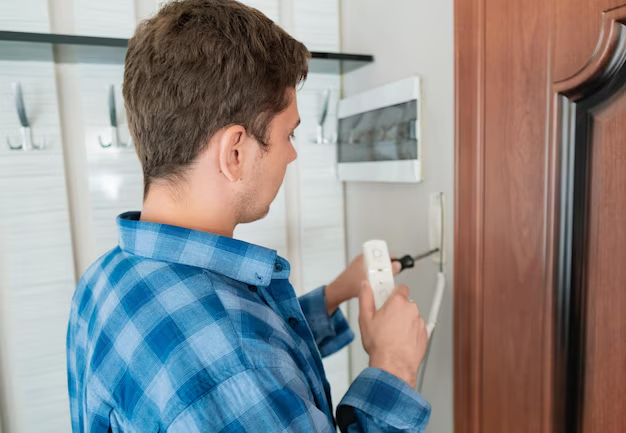How to Effortlessly Reset Your GE Refrigerator: A Complete Guide
Experiencing glitches or issues with your GE refrigerator can be frustrating, particularly when you're unsure about the next steps to take. Resetting your refrigerator can often resolve minor malfunctions and restore optimal performance. In this comprehensive guide, we will explore everything you need to know about resetting your GE refrigerator, ensuring your appliance runs smoothly and efficiently.
Why You Might Need to Reset Your GE Refrigerator
Before diving into the reset process, let's first understand why a reset might be necessary:
- Temperature Fluctuations: If you notice your fridge is not cooling as it should or it's excessively cold, this could signify a need for a reset.
- Control Panel Issues: Unresponsive buttons or a blank control panel are indicators that a reset might help.
- Ice Maker Problems: Inefficient ice production or functional issues could potentially be solved by a reset.
- Power Outages: A reset can be crucial after a power outage to recalibrate the device they often disrupt.
Understanding these common issues can help you determine whether a simple reset might save you time and effort before seeking professional help.
The Step-by-Step Guide to Resetting a GE Refrigerator
1. Check for Error Codes
Many GE refrigerators are equipped with digital displays that show error codes if something goes wrong. Refer to the user manual to understand what these codes mean and whether a reset is the appropriate action.
2. Prepare for the Reset
- Safety First: Ensure your hands are dry and you’re in a safe area free from moisture. This prevents any electric shock risk.
- Gather Information: It’s always a good idea to note down key settings or temperatures, just in case you need to set them up again post-reset.
3. Basic Reset Steps
- Unplug the Refrigerator: Safely pull the plug from the power socket. Wait for about 30 seconds to one minute.
- Reconnect the Power: Plug the refrigerator back into the power outlet.
- Power Cycle: Sometimes, just unplugging and re-plugging your refrigerator can initiate a reset cycle on its own.
4. Resetting the Control Panel
For many models, resetting the control panel involves:
- Locating the "Refrigerator" and "Ice" buttons.
- Simultaneously pressing and holding these buttons for about 10 seconds or until you hear a beep.
5. Advanced Reset Techniques
For models with a more complex design or advanced issues:
- Check the Manual: Some GE models require specific button sequences to reset. This information can often be found in the user manual.
- Use the Diagnostic Mode: Enter the diagnostic mode, if available, as it can help identify deeper issues. Accessing it typically requires pressing and holding specific button combinations.
When to Seek Professional Help
While a reset can resolve many common problems, there are times when it might not suffice:
- Persistent Issues: If problems continue even after a reset.
- Physical Damage: Address issues like frost buildup or water leaks immediately with professional assistance.
- Complex Error Codes: Some error codes indicate deeper technical issues requiring expert intervention.
💡 Quick Summary: Resetting Your GE Refrigerator
Here’s a handy bullet-point summary to keep in mind:
- ✅ Safety First: Always ensure hands are dry when handling electrical appliances.
- 🔍 Check Error Codes: Refer to the manual for guidance.
- 🔌 Unplug & Wait: The simplest form of a reset that works for many issues.
- 🤝 Follow Button Sequences: Use manual instructions for specific models.
- 🚨 Consult Professionals: If issues persist or are beyond a simple reset.
Important Settings to Monitor Post-Reset
Once your GE refrigerator is up and running again, it’s crucial to ensure all settings are correctly set:
Temperature Settings
- Refrigerator Compartment: Usually set around 37°F (3°C).
- Freezer Compartment: Typically around 0°F (-18°C).
Ice Maker
Verify that your ice maker is functioning properly by enabling it and checking if ice is being produced efficiently.
Common Misconceptions About Appliance Resets
Before concluding, it’s important to dispel any myths associated with resetting appliances:
- “Resets Are a Cure-All”: Resets are effective for minor digital hiccups. Physical malfunctions often need technical repair.
- “Frequent Resets Are Safe”: While occasional resets pose no threat, repeated resets might wear on the system, suggesting recurring underlying problems.
- “Resetting Is Complex”: It often requires simple steps, made easier by manuals or online resources.
Keeping Your GE Refrigerator in Prime Condition
Ensuring that your refrigerator remains energy-efficient and functional involves regular preventative maintenance beyond resets:
- Regular Cleaning: Dust coils and clean the interior regularly.
- Check Seals: Ensure door seals are airtight to maintain cooling efficiency.
- Annual Inspections: Consider periodic checks by professionals to keep things running smoothly.
Resets can act as a quick fix in many scenarios but maintaining your appliance's overall health is key to longevity and efficiency.
This vast coverage of resetting your GE refrigerator should empower you with the knowledge needed to handle minor issues independently and provide a clear understanding of when to call experts. A smoothly running refrigerator not only preserves food efficiently but also contributes to better energy management in your home. Remember, understanding your appliance is the first step toward reliable maintenance!
